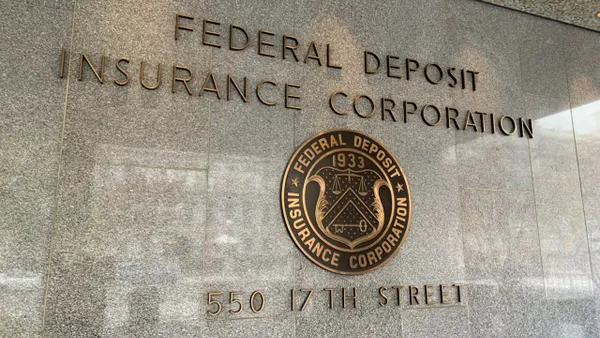This groundbreaking legislation isn't just a minor tweak; it's a complete overhaul of cybersecurity standards and operational resilience for banks, insurers, and investment firms across the EU. Failing to comply with its stringent requirements could have severe consequences. Here's why getting prepared now is paramount:
- Regulatory fines: Non-compliance with DORA can result in hefty fines, potentially crippling unprepared institutions.
- Reputational damage: A cyberattack stemming from inadequate defenses could shatter public trust, leading to customer churn and a tarnished brand image.
- Operational disruption: DORA emphasizes resilience. Unprepared organizations risk prolonged outages and service disruptions, hindering their ability to function effectively.
That being said, the road to DORA compliance might not be straightforward. Some financial organizations will require specialized expertise and advanced technological solutions to fully meet the requirements. And some may opt to partner with a seasoned financial technology company whose deep understanding of the regulation’s intricacies can make navigating its complexities easier. DORA establishes five key pillars for building a resilient, secure, and reliable digital financial environment in the EU.
ICT risk management
DORA mandates financial institutions to assess, mitigate, and manage information and communication technology (ICT) risks to combat digital threats and ensure adaptability. Here is what financial institutions are expected to do:
- Risk evaluation: Analyze internal and external factors to evaluate all ICT risks, including data integrity, system availability, and cyber vulnerabilities.
- Risk prioritization: Identify specific risks, such as data breaches and system failures, prioritize them, and establish real-time monitoring mechanisms.
- Protective measures implementation:
- Implement a multi-layered security architecture with firewalls, anti-malware, and regular system updates.
- Conduct employee training to emphasize cybersecurity awareness and adherence to protocols.
Examples of effective ICT risk management strategies:
- Multi-factor Authentication (MFA)
- Data encryption
- Backup systems
- Network segmentation
- Advanced threat protection
- Analyze reported incidents to understand their impact on:
- Operations
- Data integrity
- Customer relations
- Identify root causes to prevent recurrence by:
- Evaluating the effectiveness of current security measures
- Addressing any security lapses or vulnerabilities
Incident reporting
DORA also requires robust incident reporting. This ensures effective detection, reporting, and analysis of ICT-related incidents, ultimately preventing future occurrences. Key measures include:
- Real-time detection: Implement advanced monitoring tools to trigger real-time alerts for potential threats or breaches.
- Efficient reporting protocols: Establish clear procedures for reporting incidents to relevant authorities and internal stakeholders, facilitating swift action and mitigation.
- Thorough incident analysis:
- Analyze reported incidents to understand their impact on:
- Operations
- Data integrity
- Customer relations
- Identify root causes to prevent recurrence by:
- Evaluating the effectiveness of current security measures
- Addressing any security lapses or vulnerabilities
- Analyze reported incidents to understand their impact on:
Examples of DORA incident reporting strategies:
- Data breach response: Promptly report breaches to regulatory authorities and document mitigation steps.
- Post-incident reviews: Conduct thorough reviews to improve future response strategies.
- System outage reporting: Notify relevant authorities and analyze outage causes to prevent future occurrences.
- Collaboration with authorities: Work with regulators and cybersecurity experts to assess broader implications and ensure compliance.
Digital operational resilience testing
Under DORA, EU financial institutions must regularly conduct digital operational resilience testing. This will enable them to assess whether their ICT systems can withstand cyber threats, ultimately strengthening overall industry robustness. Here's what's involved here:
- Regular testing: Conduct comprehensive assessments and simulated cyberattacks to identify vulnerabilities and evaluate system performance under realistic threat scenarios. These assessments should focus on critical areas like network and application security, along with data protection measures.
- Independent evaluation: To ensure unbiased evaluations and provide additional scrutiny, financial institutions employ outside experts or independent cybersecurity firms for regular audits.
Examples of effective testing practices:
- Annual penetration testing that helps address network vulnerabilities.
- Simulated phishing attacks that enhance employee awareness of email-based threats.
- Stress testing that allows organizations to assess system resilience under extreme conditions.
- Tabletop exercises that help evaluate incident response plans.
Information sharing
Third-party risk management is pivotal in the DORA framework, ensuring external ICT service providers don't compromise financial institutions' operational resilience. This is what financial companies can do to elevate their third-party risk management.
- Define security standards and expectations in contracts with third-party ICT providers, including detailed SLAs and compliance with DORA standards.
- Include clauses on data security, privacy, and incident response procedures to align with GDPR and other regulations. Retain the right to audit third-party providers for compliance verification.
Examples of proper risk management strategies:
- Secure cloud contracts: Include strong security requirements in contracts with cloud providers.
- Regular third-party audits: Conduct regular audits of third-party security practices.
- Vendor risk assessments: Assess vendors' security posture before onboarding and continuously.
- Incident response coordination: Establish clear procedures for coordinating with third-party providers during security incidents.
- Exit strategies and contingency plans: Develop plans for critical vendors in case they can't meet their obligations.
DORA promotes information sharing in the financial sector to strengthen risk management and resilience through collaborative cybersecurity efforts. Here’s what it encourages companies to do:
- Creating trusted networks: Financial institutions can establish or join information sharing networks (ISNs) to exchange cyber threat intelligence and develop collective defense strategies. Participation facilitates sector-wide adaptation to evolving threats.
- Balancing confidentiality and compliance data protection regulations like GDPR remain paramount during information sharing. Secure, encrypted channels with clear policies ensure confidentiality and compliance.
Examples of secure information-sharing practices
- Cyber threat intelligence platforms (CTIPs): Dedicated platforms for sharing indicators of compromise (IOCs) and best practices.
- Industry forums and working groups: Collaborative platforms to discuss cybersecurity challenges and strategies.
- Joint cybersecurity exercises: simulations to test and refine collective response plans.
- Best practice sharing: Regular dissemination of incident learnings and threat updates.
- Information sharing guidelines: Protocols governing secure information exchange.
Conclusion
As data safety takes precedence in today's digital landscape, prioritizing DORA readiness is essential for safeguarding businesses and ensuring steadfast growth tomorrow. Embracing DORA principles not only enhances resilience against evolving cyber threats but also fosters trust and stability in the financial ecosystem.
Discover how Avenga can assist you in becoming DORA-ready and fortifying your business for a secure future. Contact us today.










